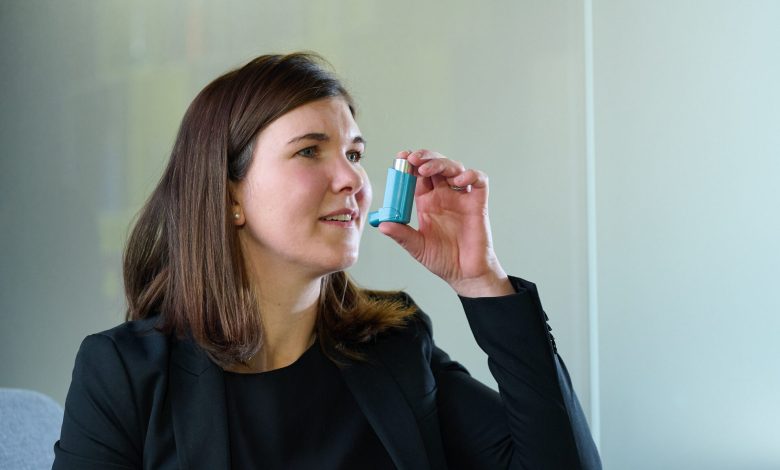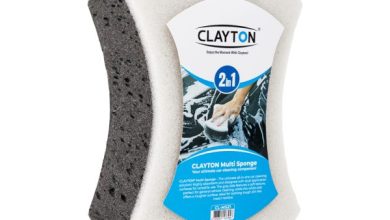Understanding the Benefits and Limitations of Different Inhaler Devices

Inhaler devices are essential tools in the management of respiratory conditions like asthma and chronic obstructive pulmonary disease (COPD). They allow for targeted delivery of medication directly to the lungs, providing relief from symptoms and improving overall quality of life. However, the effectiveness of an inhaler device can vary based on its type, design, and the patient’s ability to use it correctly. This article delves into the benefits and limitations of various Inhaler devices, offering a comprehensive overview to help healthcare professionals and patients make informed choices.
Types of Inhaler Devices
Metered-Dose Inhalers (MDIs)
Benefits
Precision and Reliability: MDIs use a metering valve to deliver a precise dose of medication with each actuation. This ensures consistent dosing, which is crucial for effective asthma and COPD management.
Portability: MDIs are compact and easy to carry, making them convenient for patients to use at home or on the go.
Versatility: MDIs can be used to deliver a wide range of medications, including bronchodilators and corticosteroids.
Spacer Compatibility: When used with a spacer, MDIs can enhance drug delivery to the lungs and reduce oropharyngeal deposition, minimizing side effects.
Limitations
Coordination Challenges: Using an MDI requires coordination between pressing the canister and inhaling, which can be difficult for some patients, especially children and the elderly.
Technique Sensitivity: Proper inhalation technique is essential for effective medication delivery. Many patients struggle with the correct use of MDIs, leading to suboptimal medication delivery.
Environmental Concerns: Older MDIs used chlorofluorocarbons (CFCs) as propellants, which have been phased out due to environmental issues. While newer MDIs use hydrofluoroalkanes (HFAs), there are still concerns about the environmental impact of these propellants.
Dry Powder Inhalers (DPIs)
Benefits
Simplified Use: DPIs do not require the same level of hand-breath coordination as MDIs. The medication is activated by the patient’s breath, making them easier to use for those with coordination issues.
No Propellants: DPIs do not use propellants, reducing environmental concerns and eliminating the need for inhalation technique adjustments related to propellant force.
Dose Accuracy: Modern DPIs are designed to deliver a consistent dose of medication with each use, improving treatment adherence.
No Need for Spacers: Unlike MDIs, DPIs do not require spacers, simplifying the device regimen.
Limitations
Breath Strength Required: DPIs require a strong, steady breath to effectively deliver medication. Patients with severe respiratory impairments or weak inhalation strength may find them challenging to use.
Sensitivity to Moisture: DPIs need to be kept dry. Exposure to moisture can cause the medication to clump, which can affect dosing and efficacy.
Limited Medication Types: While DPIs are effective for certain medications, they may not be suitable for all types of respiratory drugs, particularly those that require fine mist delivery.
Nebulizers
Benefits
Suitable for All Ages: Nebulizers are particularly useful for infants, young children, and elderly patients who may have difficulty using MDIs or DPIs.
Prolonged Medication Delivery: Nebulizers convert liquid medication into a fine mist, allowing for extended treatment periods and gradual medication delivery.
Ease of Use: Nebulizers typically require less technique precision, making them easier for patients with severe symptoms or coordination difficulties.
Effective for Severe Cases: Nebulizers can deliver larger doses of medication over a longer period, which can be beneficial for acute exacerbations or severe cases.
Limitations
Treatment Time: Nebulizers generally take longer to administer medication compared to MDIs and DPIs, which can be inconvenient for patients with busy schedules.
Portability Issues: Many nebulizers are bulkier and require a power source, making them less portable than MDIs and DPIs.
Device Maintenance: Nebulizers require regular cleaning and maintenance to prevent contamination and ensure proper functioning.
Increased Medication Waste: Some nebulizers may deliver medication inefficiently, leading to increased medication waste and potentially higher treatment costs.
Technological Innovations in Inhaler Devices
Smart Inhalers
Benefits
Enhanced Monitoring: Smart inhalers are equipped with digital sensors that track medication usage, inhalation technique, and adherence. This real-time data helps healthcare providers tailor treatment plans more effectively.
Improved Adherence: Smart inhalers often include reminders and alerts to help patients remember to take their medication, thereby improving adherence and treatment outcomes.
Data Integration: Data collected by smart inhalers can be integrated with mobile apps and electronic health records, allowing for more comprehensive patient management and timely adjustments to treatment plans.
Real-Time Feedback: Patients receive immediate feedback on their inhalation technique, which can help improve medication delivery and effectiveness.
Limitations
Cost: Smart inhalers are often more expensive than traditional inhalers, which can be a barrier for some patients and healthcare systems.
Technology Dependence: Reliance on technology means that patients need to be comfortable using digital devices and may face challenges if there are technical issues or data connectivity problems.
Privacy Concerns: The collection and sharing of personal health data raise concerns about privacy and data security.
Personalized Inhaler Devices
Benefits
Customized Treatment: Personalized inhalers are designed to meet individual patient needs, including dose adjustments and device preferences, leading to more effective treatment and improved patient satisfaction.
Enhanced Comfort: Devices can be tailored to fit the patient’s hand size and inhalation strength, increasing comfort and ease of use.
Better Outcomes: Customization can lead to improved adherence and better management of symptoms, resulting in more effective control of respiratory conditions.
Flexibility: Personalized inhalers can be adapted to accommodate various medication types and combinations, offering greater flexibility in treatment options.
Limitations
Complexity: Customizing inhaler devices can be complex and may require additional consultations and adjustments, potentially increasing the burden on healthcare providers.
Cost: Personalized inhalers may be more costly due to the customization process and advanced features.
Limited Availability: Not all healthcare systems or insurance plans may cover personalized inhaler devices, limiting access for some patients.
Advanced Delivery Systems
Benefits
Improved Efficacy: Advanced delivery systems, such as breath-enhanced nebulizers and ergonomic inhalers, ensure more efficient medication delivery to the lungs.
Increased Patient Comfort: Innovations in design and functionality enhance patient comfort and ease of use, leading to better adherence and treatment outcomes.
Faster Treatment: New delivery systems can reduce treatment times and improve overall patient experience.
Precision Dosing: Advanced systems often provide more accurate dosing and minimize medication waste.
Limitations
Cost and Accessibility: Advanced delivery systems can be more expensive and may not be readily available in all healthcare settings or regions.
Learning Curve: Patients may need time to adjust to new devices and delivery systems, which can be challenging for some individuals.
Device Maintenance: More advanced devices may require more frequent maintenance or specific handling procedures to ensure optimal performance.
Optimizing Patient Outcomes
Education and Training
Effective use of inhaler devices is crucial for managing asthma and COPD. Proper education and training ensure that patients can use their devices correctly and adhere to their treatment regimens.
Inhalation Technique Training: Provide hands-on demonstrations and practice sessions to teach patients the correct technique for using their inhaler devices.
Educational Materials: Offer brochures, videos, and online resources to reinforce proper device use and address common questions.
Regular Follow-Up: Conduct follow-up visits to assess device use, address any issues, and provide additional support as needed.
Adherence Strategies
Adherence to prescribed medication regimens is essential for effective asthma and COPD management. Implement strategies to enhance adherence and ensure patients receive the full benefits of their treatment.
Reminders and Alerts: Use digital reminders and alerts to help patients remember to take their medication and use their inhalers consistently.
Simplified Regimens: Minimize the number of devices or doses required to streamline treatment and reduce complexity.
Patient Engagement: Involve patients in their treatment planning and goal setting to enhance motivation and commitment to their medication regimen.
Addressing Common Challenges
Different Inhaler devices come with their own set of challenges. Addressing these issues can help improve patient outcomes and ensure effective medication delivery.
Coordination and Technique Issues: For MDIs, consider using spacer devices to improve drug delivery and reduce coordination challenges. For DPIs, ensure patients understand the need for a strong, steady breath.
Device Maintenance: Educate patients on proper storage and maintenance of their inhaler devices to prevent issues such as clumping or contamination.
Adherence and Motivation: Implement strategies to address adherence issues and keep patients motivated to follow their treatment plans.
Conclusion
Inhaler devices are a cornerstone of respiratory care for asthma and COPD, offering targeted medication delivery to manage symptoms and improve quality of life. Understanding the benefits and limitations of different inhaler devices is essential for selecting the most appropriate tool for each patient. Technological innovations, such as smart inhalers, personalized devices, and advanced delivery systems, have significantly enhanced the efficacy and convenience of inhaler therapy.
By providing comprehensive education, implementing adherence strategies, and addressing common challenges, healthcare professionals can optimize patient outcomes and ensure effective management of respiratory conditions. As technology continues to evolve, ongoing advancements in inhaler devices promise even greater improvements in respiratory care, paving the way for more effective and personalized treatment solutions.



